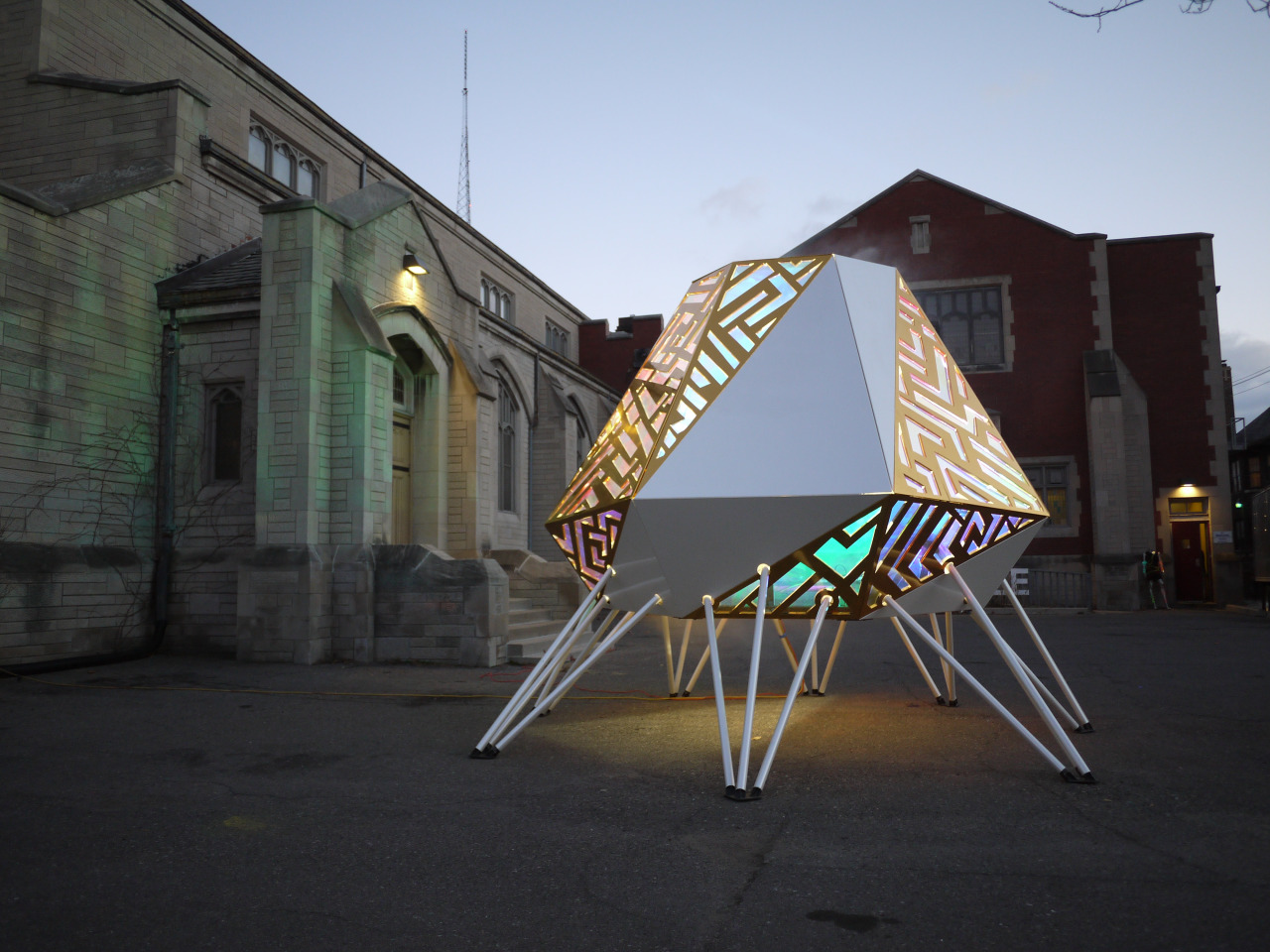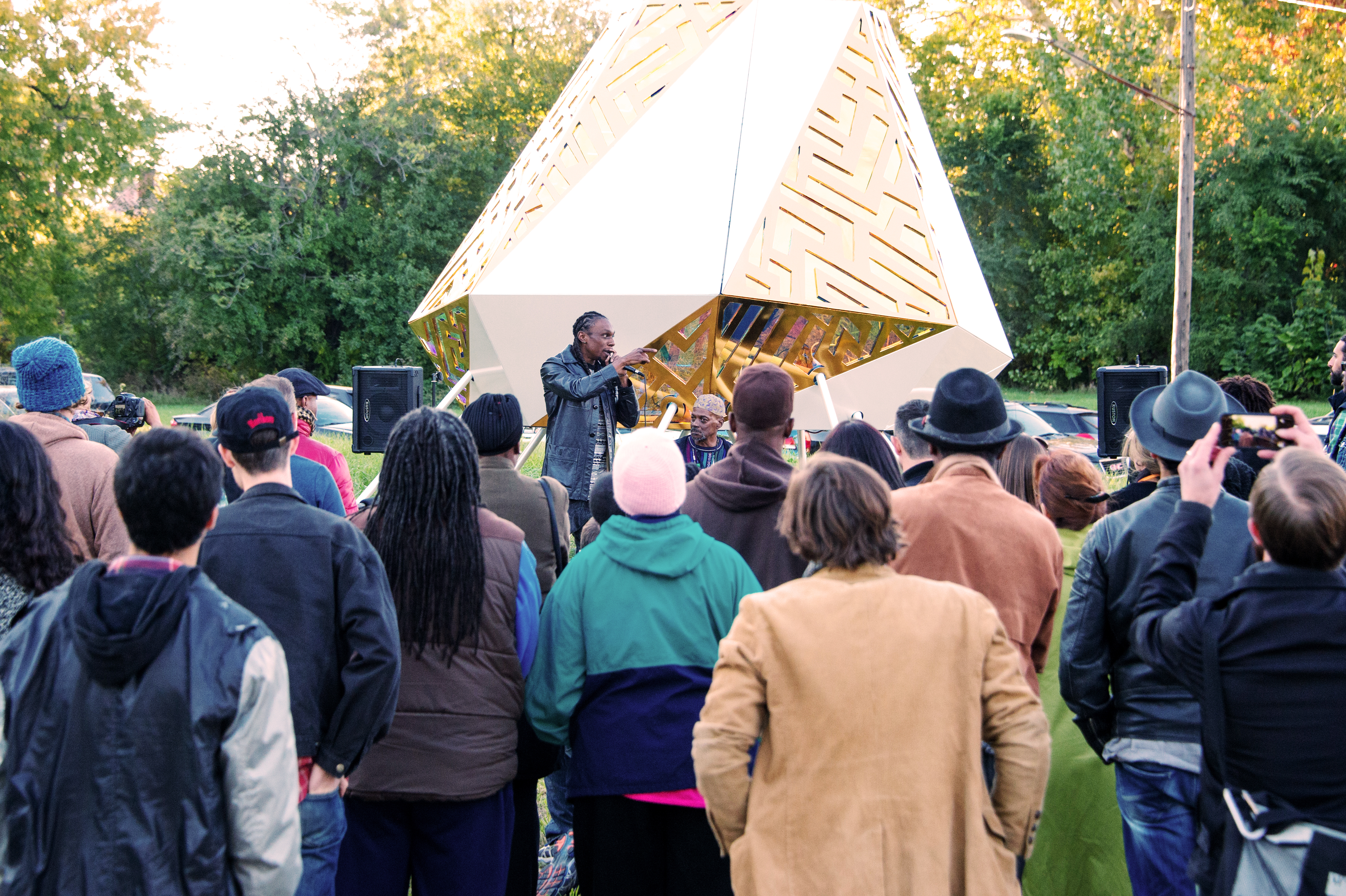Prepare for Landing
Residue
by Ian Donaldson, M. Arch I, ’18
The North End of Detroit is the city’s unofficial cradle of Funk, where George Clinton first transformed into Dr. Funkenstein and got his big start at Motown Records. Famous musicians such as Smokey Robinson, Bettye Lavette, John Lee Hooker, and B.B. King all played regularly along Oakland Avenue, the main strip in the North End. When this history gets mentioned, visible nostalgia and excitement animates the older faces in the neighborhood, while the younger ones remain blank, having only heard stories suspended in the surrounding landscape. On the street, there is little physical evidence of Funk music’s importance in American and global culture.
In fact, Detroit’s evacuation and subsequent ruination has become the posterchild for American Cities throughout the sunken industrial chest of America. Images of the Packard Automotive Plant and Michigan Central Station have been widely disseminated with a feral clout that has spread the name of Detroit across the world. Although these monuments dominate our collective imagination, cultural residue still pools in much of the city.
With little money, no client, and just a rich history to draw upon, University of Michigan Associate Professor Anya Sirota and her partner, Jean-Louis Farges, of the design office AKOAKI, began working on design strategies to reinvigorate the cultural lineage of the North End. They assembled the O.N.E. Mile Project as a multi-disciplinary effort to reinvigorate the cultural production and socio-economic activity of the neighborhood. The project was prompted by the hostile and widespread blight removal campaigns that would pave over the last residue of Detroit’s cultural legacy. The people and organizations that compose the creative infrastructure for the neighborhood remained united through the campaign, resulting in a series of scenographic events and gardens to be designed and curated along a one mile strip of Oakland Avenue.
The focal point of the O.N.E. Mile Project was the ‘landing’ of the Mothership, the legendary stage prop of Parliament Funkadelic, back on Oakland Avenue alongside a performance of twelve former and current P-funk musicians. The original Mothership was scrapped when the band fell on hard times in the 80s, but today a replica hangs in the Smithsonian in Washington.
A contemporary reimagining of the Mothership, the Parliament Afro-Futurist vessel had to manage a very carefully selected formal, iconographic, material, and performative agenda. The project was a result of an interdisciplinary effort between the Oakland Avenue Artists Coalition and the creative capital of the North End. The project combined spaceship iconicism, Afro-Futurist sensibilities, and the playfulness of the legendary Funk emblem, while co-opting the techniques of Detroit’s culture of car customization. As an icon it had to function as a broadcast module for a self-proliferating set of images. The events and scenographies aimed to disseminate images and transmit a narrative about Detroit’s successes and rhizomatic global influence.
The landing was a success and brought around 400 people to the venue, which was just down the street from the first Parliament performance. Since the opening,the Mothership has had several other landings: the Henry Ford Museum for the Detroit Maker Faire, along the Cass Corridor for Noel Night, among many others. The landings of the Mothership and its dissemination seek to promote an agenda about Detroit and the agency of contemporary design.

The Mothership after landing in Detroit.

The Mothership hosting an outdoor concert in Detroit